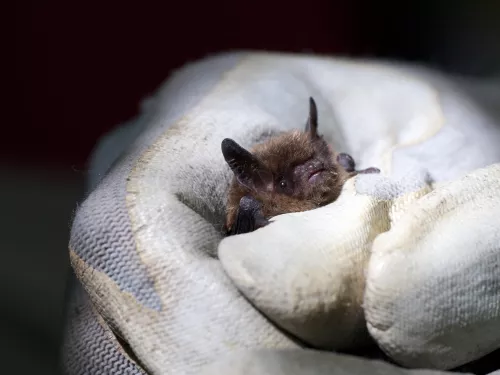Blue-tailed damselfly
The Blue-tailed damselfly does, indeed, have a blue tail. It is one of our most common species and frequents gardens - try digging a wildlife pond to attract dragonflies and damselflies.
The Blue-tailed damselfly does, indeed, have a blue tail. It is one of our most common species and frequents gardens - try digging a wildlife pond to attract dragonflies and damselflies.
In April and May, our ancient woodlands are awash with the much-loved, nodding heads of the bluebell. Millions of bulbs can exist in just one wood, giving rise to the 'blue carpets' that are a springtime joy.
The yellow, star-like flowers of bog asphodel brighten up our peat bogs, damp heaths and moors in early summer, attracting a range of pollinating insects.
Look for the star-like, feathery, white flowers of Bogbean in ponds, fens, bogs and marshes. It is so-named because its leaves look like those of broad beans.
Bottlenose dolphins in British waters are the biggest of their kind – they need to be able to cope with our chilly waters! They are very sociable and will happily swim alongside boats, providing people on the boat a wonderful wildlife experience.
Our most familiar fern, bracken can be found growing in dense stands on hillsides, moorland, heathland and in woodlands. It is very large and dies back in winter, turning the landscape orangey-brown.
The bramble is the thorny shrub of hedges, woods and scrub that gives us delicious blackberries in autumn. Gathering wild food can be fun, but it's best to do it with an expert - come along to a Wildlife Trust event to try it.
These winter visitors are close relatives of the chaffinch and can often be found in the same flocks, where their white rump and nasal calls give them away.

The small, shaggy-furred Brandt's bat roosts in all sorts of houses, old or modern. It is similar to the whiskered bat and they often roost together, but in separate colonies. It feeds low to the ground in woodland and near water.
This sponge is found on rocky shores around the UK and looks like a thick bready crust (if you use your imagination a bit!).
The bronze-coloured bream can be seen gathering in large shoals in lowland ponds, lakes and slow-flowing rivers. It is a member of the carp family and looks similar to the dace, chub and rudd.
The brent goose flies to the UK for the milder winter. Two populations arrive: those with dark bellies can be found around Eastern England